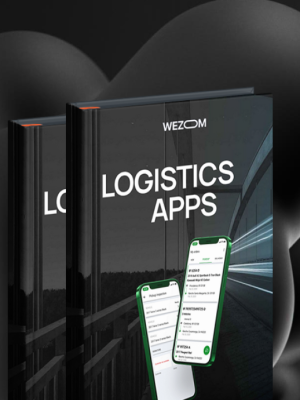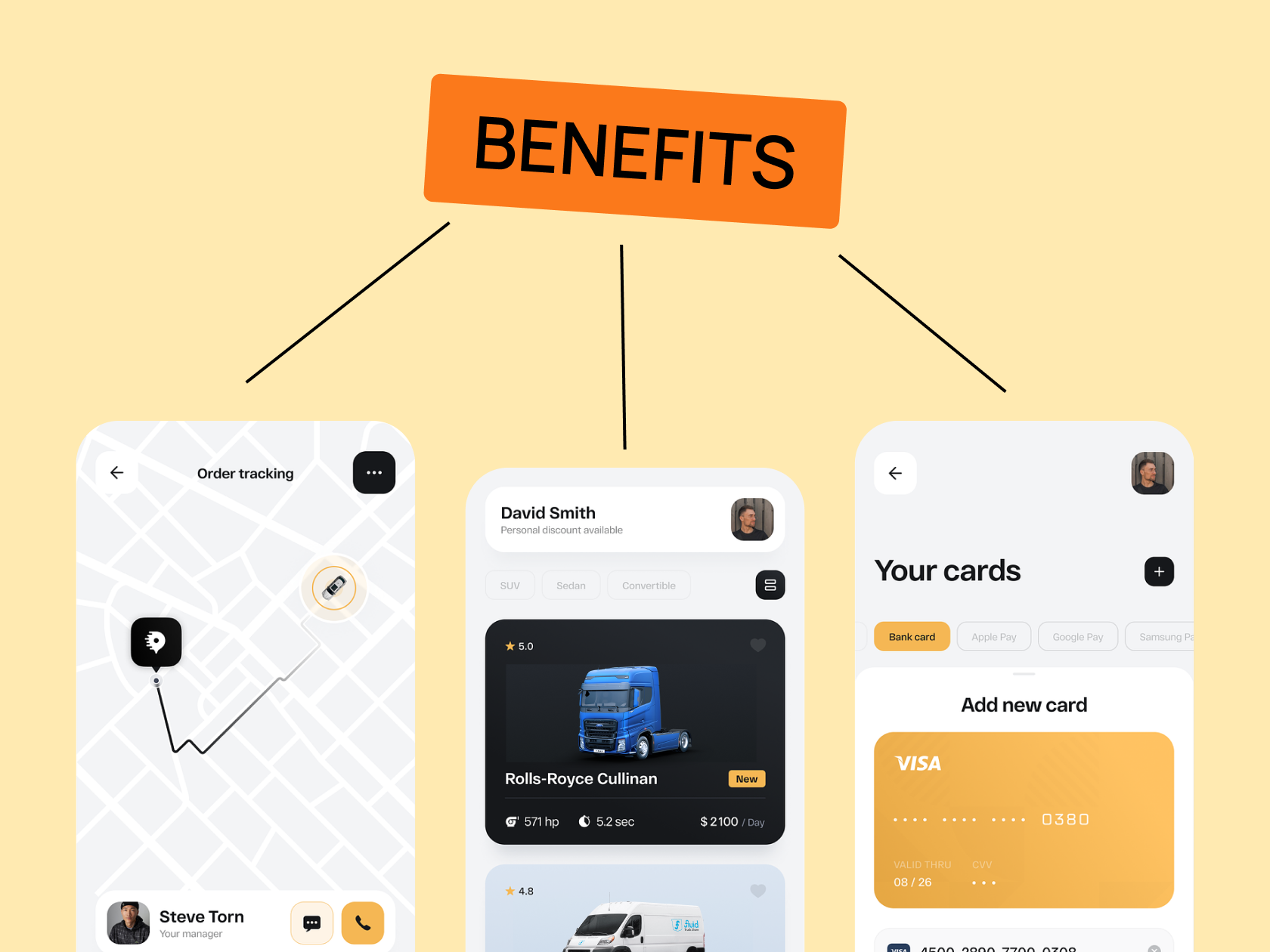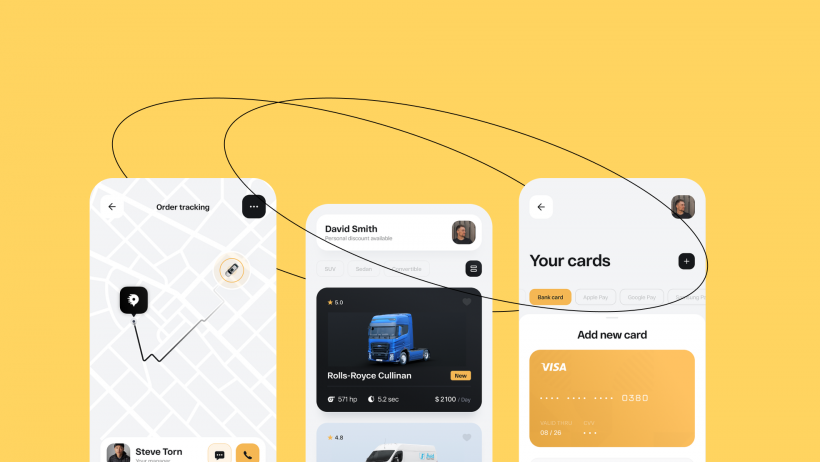Truck fleet management is a complex process where costs are constantly rising, the number of drivers is decreasing, and a human factor in the bureaucracy can destroy even the best business model. To overcome these challenges, you need a transportation management system (TMS) that provides effective feedback to your team. In this case, a mobile app for truck drivers and dispatchers will aid you.
What is the problem with transport management?
Even in 2024, many carriers operate like they did 15 years ago - through spreadsheets, instant messengers, and email. The driver arrives for pickup, receives a Bill of Lading (BOL), checks it, checks the cargo, sends a photo to the dispatcher via Viber or WhatsApp, and then sets off.
Current processes are outdated and ineffective as messages from dispatchers and drivers quickly become a stack of documents in which it is difficult to find the necessary invoice. Thus, it is difficult for you to ensure proper data protection and timely determine the truck's and cargo's location and condition. Finally, the lack of control and accountability encourages irresponsible drivers - in practice, they quickly forget to submit bills and undergo maintenance.
Managing even two dozen trucks in such conditions turns into a nightmare with many financial and reputational risks. However, many companies still operate this way, which can lead to disastrous consequences.

Why don't popular TMS solve all problems?
Today, logistics operators do not need to explain what TMS (Transport management system) is or its advantages. Such platforms have been available on the market for more than 20 years. They simplify communication between dispatchers and drivers, automate document flow and financial transactions, allow you to track the status of vehicles and cargo in real-time, and help effectively limit the load on drivers and reduce costs.
Finding a TMS is the first step for any company aiming to get its transportation management in order. Access to a TMS is available on the market, or you can order your solution. We talked about the benefits of custom development not so long ago. But, will TMS functionality be enough in practice?
Unfortunately, not everything is so simple. As experience shows, TMS often becomes the first step in the development of the digital ecosystem necessary for the company. After all, a typical TMS system has several limitations, especially when it comes to long-standing popular boxed solutions:
- Old technological base. If the platform was developed in the late nineties and early 2000s, it relies on the decisions of its time. Decisions that give rise to problems with customization, performance, security, and work on various operating systems.
- Outdated UI/UX. Often the interface of such a system is from the era of Windows 98. Something no modern user will want to use, who relates to simple and effective interfaces found in Apple and Google services.
- Difficult implementation. Yes, popular TMS can provide an excellent platform for organizing processes, but how do most dispatchers, managers, and drivers use this platform? Very often, mass solutions leave this issue unaddressed. As a result, employees do not want to use them due to limited functionality or legacy platforms (a task such as turning on the PC every time you need to upload an invoice becomes an inconvenience).
You can overcome these problems with a modern mobile application that provides the system with cross-platform deployment, dynamic configuration capabilities, a modern interface, easy access to functions, and extensive feedback.
Today, a few popular TMSs offer users integration with apps for trucking companies. However, on the other hand, developing your own one can be a much more profitable option for medium and large businesses.
What are mobile applications for drivers?
WEZOM has been developing IT solutions for business for 24 years, including software for logistics companies. Our teams have created several corporate drivers' trucking apps for the US and Eastern European markets that solve problems related to transportation efficiency and management issues.

These tools digitize and transmit all the information necessary for dispatching to TMS and provide extensive opportunities for fleet management, from tracking to distributing the load on drivers and technical monitoring.
Here are just a few key advantages that a mobile application for cargo transportation has:
- Simple, flexible, and efficient route planning, including planning a large number of pickups, deliveries, and additional stops.
- Drivers can quickly enter additional fuel or vehicle repair costs into the database and receive reimbursement without bureaucratic red tape.
- DVI and PTI to check the technical condition of the trucks.
- The application can record driver's licenses, insurance, and expert opinions in a digital database.
How do apps for truckers work in practice?
First, the driver creates a cargo delivery, which assigns a route, and then receives a delivery notification on his smartphone indicating the route, cargo characteristics, conditions, and comments.
The driver uploads a digital invoice into the application and sends it to the dispatcher. When communicating with the dispatcher, you can also discuss specific transportation conditions (for example, using a refrigerator or a special trailer). However, the trip can only be approved once the truck passes the mandatory technical inspection.
While traveling, the driver can pay for unplanned expenses, such as loading/unloading goods or light repairs. In this case, they can apply for a refund, which will be processed automatically and included in their salary.

All data enters the TMS and is available to each system operator. The driver’s actions can be monitored at every stage of delivery, which requires much less labor and bureaucracy and minimizes risks and costs.
Each platform is unique in some way since it is created individually, according to the company’s requests and business processes. For example, some clients require integrating HR functionality into the transport ecosystem to find and hire new drivers, advanced accounting functions, or solve driver discipline problems using trucking business apps.
As practice has shown, issues of labor discipline can also be resolved through a mobile application. It is enough to add game elements that will provide incentives to follow the rules. For example, in one of our products, we implemented a system of quests and achievements for drivers, like in video games. Dispatchers, accountants, and managers can open quests for drivers (examples: “Complete maintenance in the next three days” or “Upload 10 accounts into the system”). Completing tasks is rewarded with company-branded tokens, which can be exchanged for goods, financial bonuses, or even extra days off.
This approach worked much better among drivers than the stick method and showed that gamification of transportation is a new stage in management development that will soon change the industry.
Key Features that Will Be Useful to Drivers
Let's look at the main features that you can implement in the trucker tools app.
Load search or order section
Relying on the enormous experience of the company that created the cutting-edge car hauling app, it follows that:
“Whether you're going to implement advanced technologies or stick to the time-proven scenario, the central element in your car hauling app will still be the loadboard in which the drivers can choose the most profitable orders, or this task will be assigned to the dispatcher. In the second case, you’ll need to provide an order history with all the necessary information (for example, the type of vehicles being transported and accompanying documentation) and display the order status. Generally speaking, all this should be presented on a single platform, that is, in a mobile application, so drivers can quickly view the data they need without bothering with dozens of third-party software or paper documents.” - Haulk app’s team
Thus, all this perfectly demonstrates the importance of high-quality development of loadsearch and/or order section in your app.
Routing & fuel optimizer
As a car-hauling business owner, you must constantly focus on optimization and reduction of your overhead expenses. To do this, you may need a routing and fuel optimizer, which can be based on both complex mathematical algorithms and artificial intelligence - it all depends on your budget and personal attitude towards implementing AI. In general, there are many such ready-made optimization solutions on the market, so you can consider a more affordable option that involves integration with your leading software.
Parking slot available
To minimize downtime for your drivers, you can also create a graphical panel within your app. There, they will be able to navigate parking better and quickly check free slots. This is especially useful for companies with large fleets.
Load tracking, document upload
It also makes sense to provide functions for uploading documents, photos of cargo, and other files generated in third-party applications and complement each order. This way, your drivers will not have to use third-party messengers and storage to access them and send them to the dispatcher.
Weather conditions
Weather conditions can become a serious obstacle to the successful completion of orders. Therefore, you should introduce the corresponding functionality (with the ability to provide notifications in the background) in your application. Of course, this feature cannot be considered paramount, so you can always refuse its custom implementation in favor of third-party mobile applications such as MyRadar Weather Radar. However, the most preferable option is still developing an all-in-one solution.
How to start digitalization?
Nowadays, the logistics business must be digitalized, and the sooner a transport company thinks about finding or developing its truck logistics app, the easier it will be to grow and evolve.
Successful implementation of logistics software results in significant cost reductions and impressive increases in profitability. For large companies, we can save tens of thousands of dollars every month. However, developing and successfully implementing such software takes work - you need to consider the specifics of the industry and modern trends in the IT field.
If you face problems of inefficiency in the work of a transport company, then do not try to solve all of the issues alone. Contact WEZOM for advice. We are always ready to share our experience and knowledge, show our cases, and answer difficult questions.

